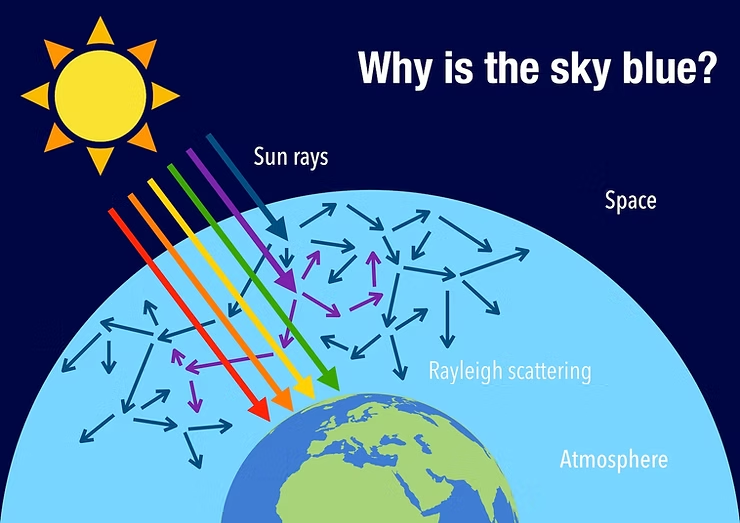Why is the sky blue? The science of light
- Willy's Wilderness
- Jan 13, 2023
- 3 min read
Updated: Jul 24
Our mind is a muscle. Curiosity makes our brains stronger and sharper, so never stop asking why. One of the first questions you may have pondered as you explore the world around you is this: Why is the sky blue? Fortunately, there have been many curious folks who have asked the same question. We can research, find answers and fill our need to know!

Let’s look at why we have blue skies. It is all about light. Sunlight is white light. White light is made up of the colors of the rainbow: red, orange, yellow, green, blue, indigo, violet. As the light travels, each of these colors travel at a different wavelength. Red has the longest wavelength, and violet has the shortest. We call these individual pieces of light photons. When these photons of colored light hit an object, three things can happen:
The light can pass right through the object, like a window.
The object can absorb colors.
The object can reflect colors. The color that an object reflects reaches our eyes, and that is the color we see.
So a pair of red gloves is reflecting red while absorbing all the other colors. A black cat is absorbing all the colors, therefore our eyes see black, which is the absence of color. A blank white sheet of paper is reflecting all the colors, since all the colors together make white. And the vast sky is reflecting the color blue. But why?
Rayleigh scattering
Blues skies are caused by the phenomenon known as Rayleigh scattering. This marvel is named after Lord Rayleigh, a mathematician and physicist who published his discoveries in 1871.

There are many tiny particles in our atmosphere, including molecules of nitrogen and oxygen. As sunlight travels through the sky, it makes contact with these molecules. Colors that have long wavelengths pass right through these particles, heading for the Earth’s surface.
Blue has a shorter wavelength, and when it hits these molecules, it bounces off them. This blue rebounds into another molecule and bounces yet again into another molecule. Millions of blue photons continue on this journey through the sky, scattering from one molecule to the next. Then the final rebound heads toward our eyes, making the sky look blue.
Why don’t we see violet skies?
But wait! If violet has the shortest wavelength and shorter wavelengths scatter more, shouldn’t the sky be violet instead of blue?
Words to know
Phenomenon: A fact or situation that is observed to exist or happen.
Ponder: To think about carefully.
Wavelength: The distance between successive crests of a wave.
There are two reasons we do not see a violet sky. First, sunlight just naturally produces more blue energy than violet. So there are more blue photons scattering in the sky than violet ones. Second, our human eyes are simply more sensitive to the color blue.
What about sunrises and sunsets?
When the sun is near the horizon, it is much farther away from us than when it is over our heads. Therefore, light has a much longer distance to travel. The blue light is scattered again and again, never having the chance to reach our eyes. Instead, we see the colors with the longest wavelengths: reds, oranges and yellows. These colors have passed right through the molecules, giving us the magical multicolored moments of beauty at dusk and dawn.
This year, Four Rivers Environmental Education Center in Channahon is celebrating Rivers of Color with color-themed programs and events all year and many opportunities to enjoy and explore the natural world and flex your mental muscles. Check out our latest Rivers of Color programs.
____________


